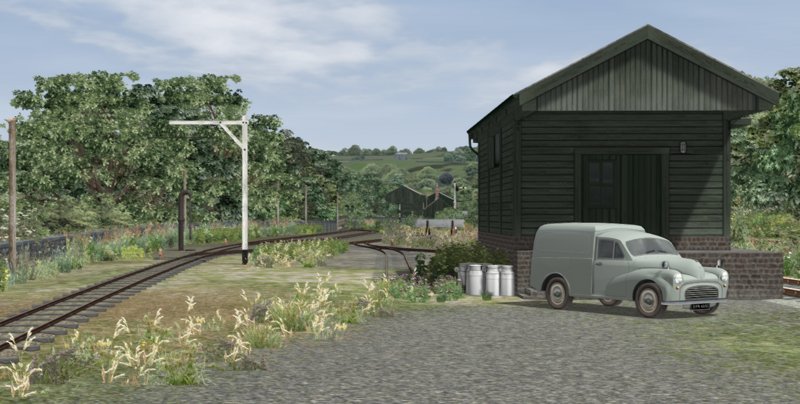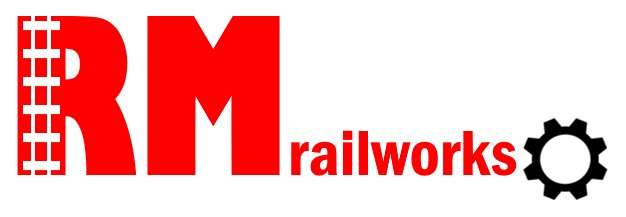from nowhere to nowhere
The Leek and Manifold Valley Light Railway stated operations in 1904 and lasted through until 1934.
Originally the line was meant to encourage agricultural production and the development of a limestone industry. However, it quickly became dependant on milk traffic supplemented by the five daily passenger services.
It never made a profit.
Get THe route
All you need to get this route.
features
The features of route in TSC
Past & Future
Version history and future plans
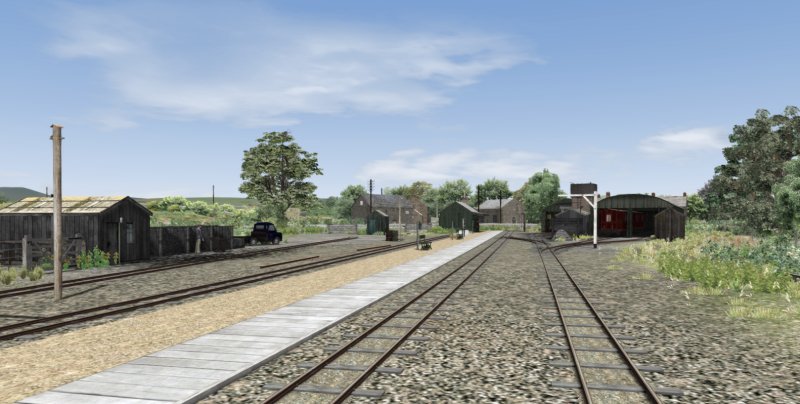
Hulme End
Home of the LMVLR with carriage sheds, an engine shed, locomotive coaling and a large water tower.
The station building is the largest on the line and is flanked by a two road goods yard. There is a coal merchants and at one end of the yard is a weighbridge.
I have shortened the station but other than that it is as close to the original as I can get without including the dual tracks used to store standard gauge wagons.
Ecton
Long before the railway Ecton was the site of some of the most productive lead and copper mines in the UK. By the time of the railway these were long gone, but the landscape still bore the scars.
Ecton station building was typical for the line and were known as Bungalows, supplied by the Portable Buildings Company.
The station loop and siding were an important part of the operation of the line as they led to the dairy siding.
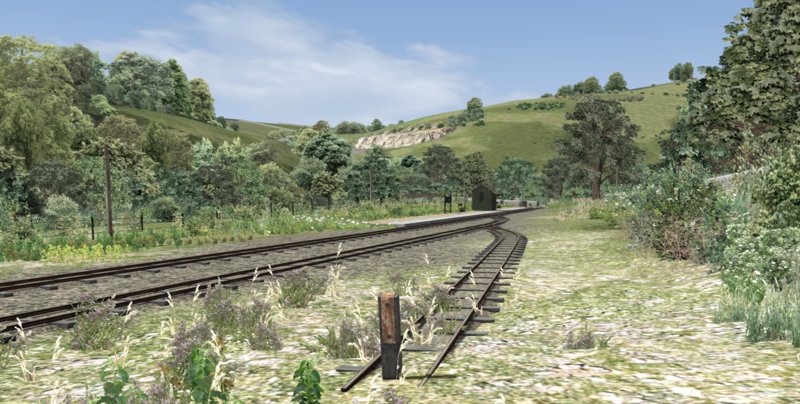

Ecton Dairy
The main source of traffic was milk to and cheese from the creamery at Ecton. This was located on its own siding at the station. It was the site of the old smelting house.
After building the route I found photographs that showed the site was much larger than this model. A project for another time.
I have added a boiler house with coal unloading as an excuse for skip workings on the line.
Butterton
Located just before Swainsley tunnel the halt served the village of Butterton and the guests at Swainsley Hall.
Sir Thomas Wardle, of Swainsley Hall, was a leading figure in the artistic world and insisted on a tunnel so that the railway would not spoil his view. The tunnel was built large enough to fit a standard gauge horse box on a narrow gauge transporter wagon.
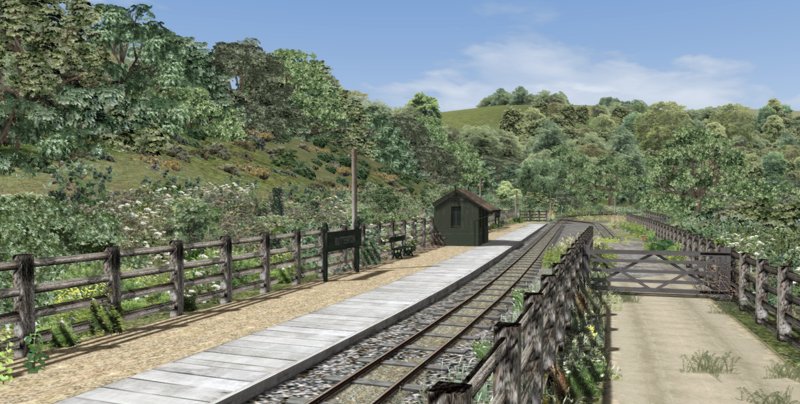
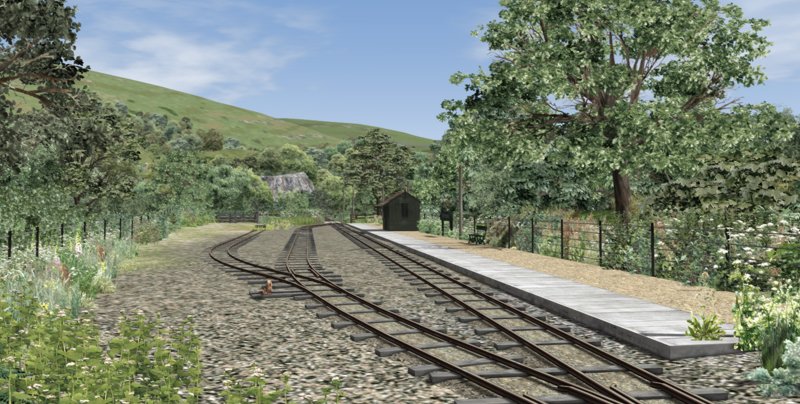
Wetton Mill
The mill had long since closed before the LMVLR was operational. Wetton was a favorite spot for visitors having both a stream for paddling and a cafe.
The station is largely accurate but the ground slopes up alongside the road in a way that is difficult to do with the TSC editor.
The run-round loop is useful here to allow pick-up goods to operate to the single siding halts on route.
Redhurst Crossing
A small halt just before one of the many bridges over the River Manifold.
There is no siding here and the platform is quite short but there is a milk churn loading platfrom beside the road.
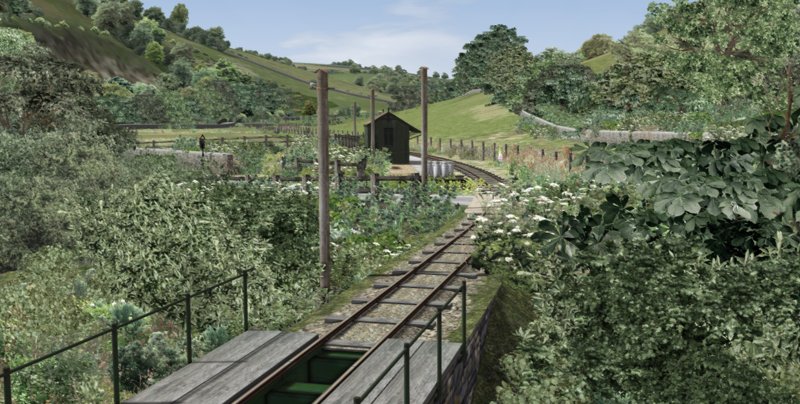
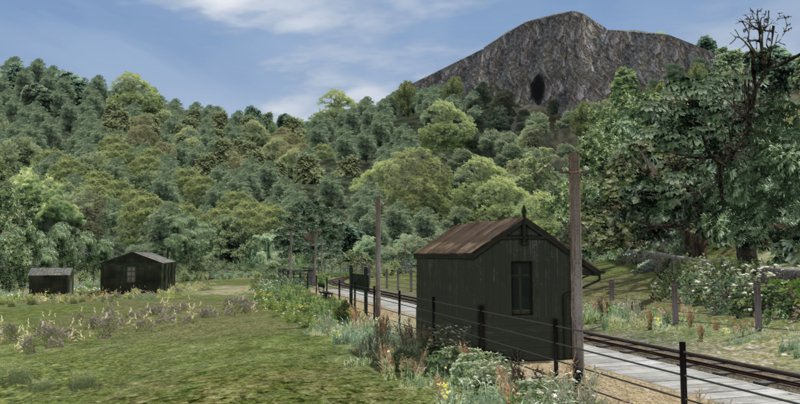
Thors Cave
The iconic image of the line is the large cave set high on a Limestone crag overlooking the railway.
The halt sits close to a cafe, which replaced one that originally burnt down, for walkers on their way to visit the cave.
There is no siding or special facilities here other than a rather nice view.
Grindon
Grindon station also has a loop with a short siding.
It is situated at the point where the road crosses the River Manifold before climbing out of the valley for the last time heading east. This makes Grindon an important location for agricultural goods traffic.
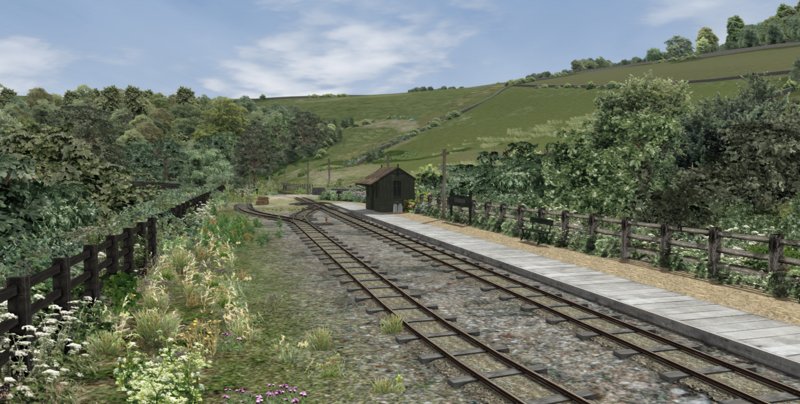
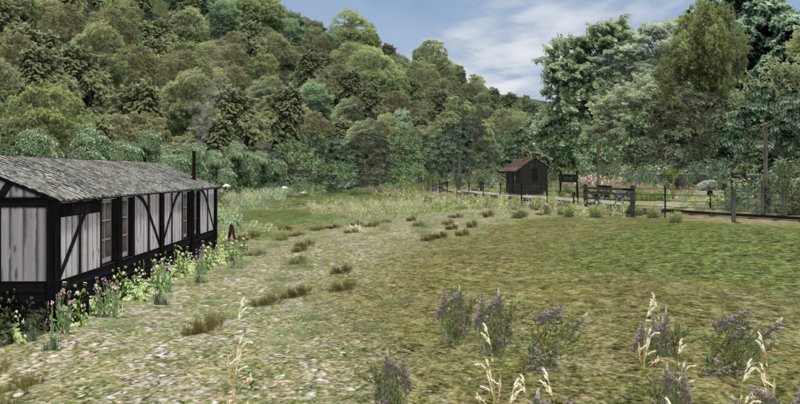
Beeston
Beeston is the lowest point of the route where the River Hamps joins the River Manifold.
Beeston Tor is a classic British rock climb. The fields around here are frequently used for camping and, for many years, there was always a scout camp in the field beside the black & white tea shop.
Sparrowlee
Sparrowlee was a halt that didn’t even need a building. It had a single siding that served just the local farms.
It was also a favoured destination for walkers as between Beeston Tor and Sparrowlee the River Hamps twists and turns in a rather scenic manner.
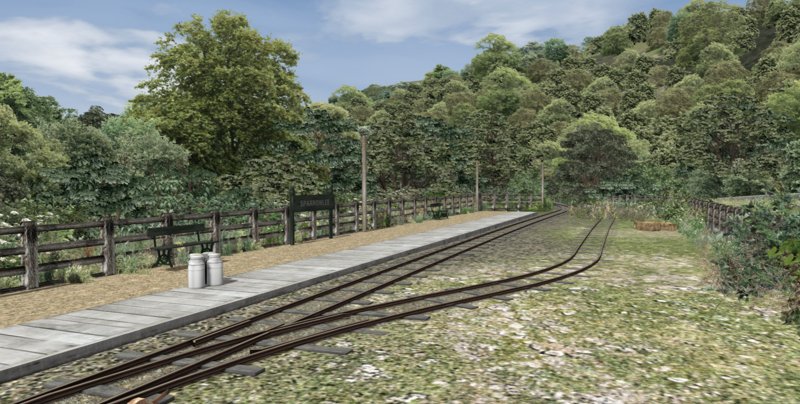
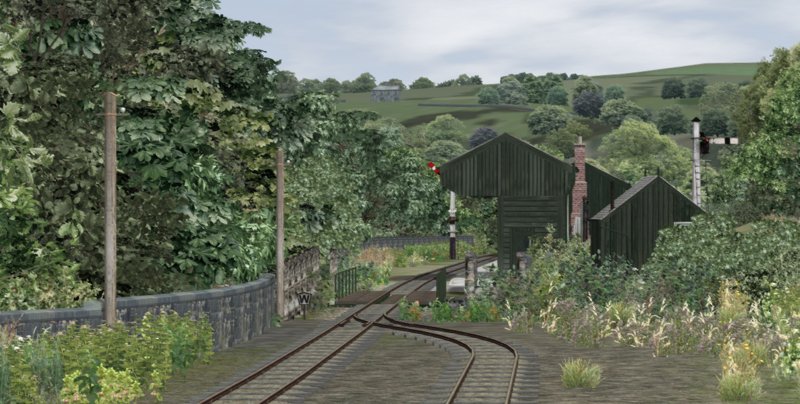
Waterhouses
At the top of a steep climb from the level crossing over the Waterhouses road, this station was the transfer point of goods and passengers for the standard gauge Cauldon branch to Leek.
The narrow gauge and standard gauge had seperate station buildings with much of the milk traffic originally being offloaded in barrows and man-handled up the standard gauge platform to waiting vans.
Waterhouses Yard
In real life this was the site of the famous transhipment of standard gauge wagons onto narrow gauge transporter wagons. This allowed standard gauge milk tanks to reach the dairy or standard gauge trucks to be loaded with agricultural produce at site. It was a brilliant idea.
I have a simplified version of the yard layout suitable for manually transfer of goods wagons as transporter wagons are a bit beyond TSC
The goods shed is one of the few surviving LMVLR buildings.
